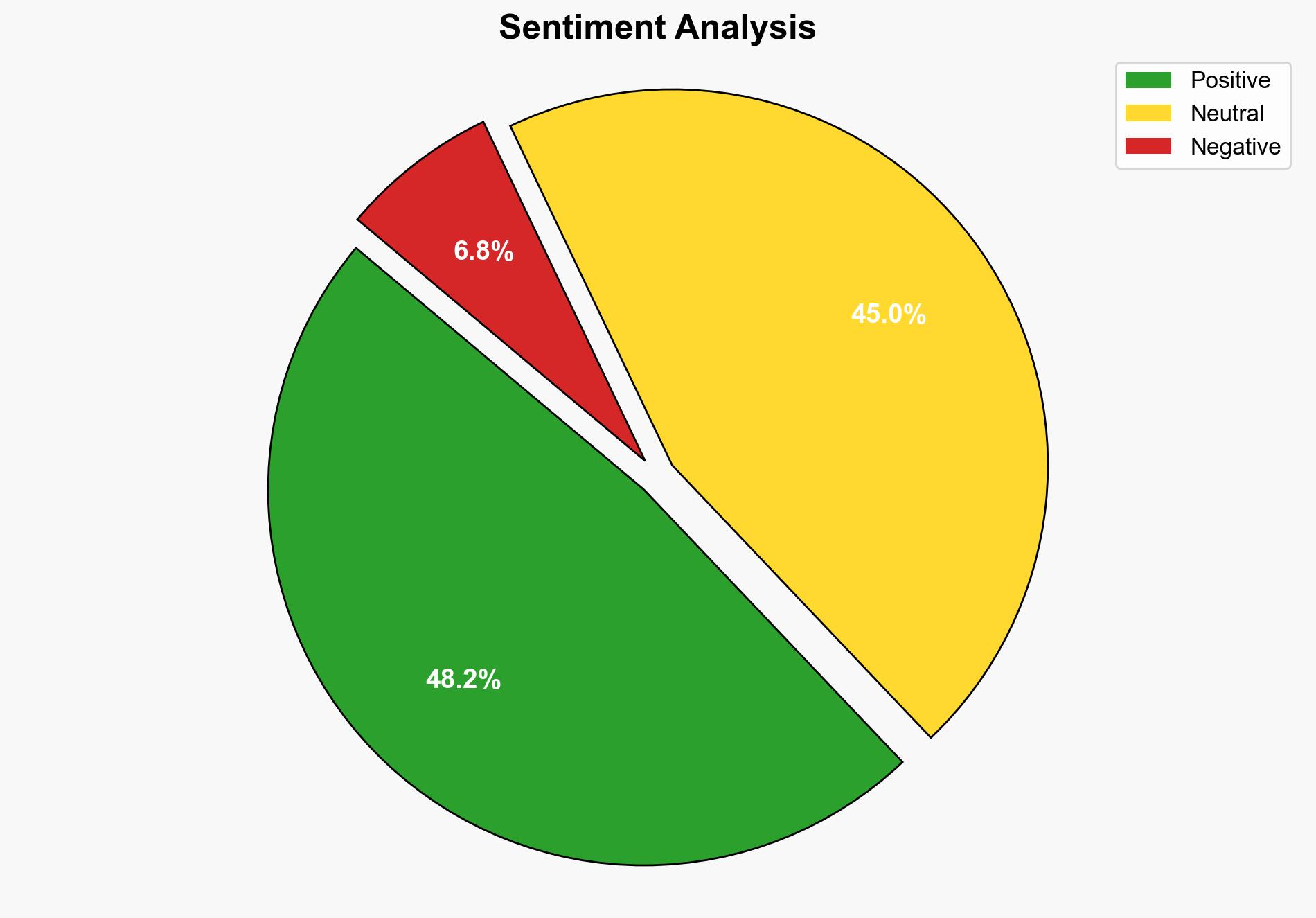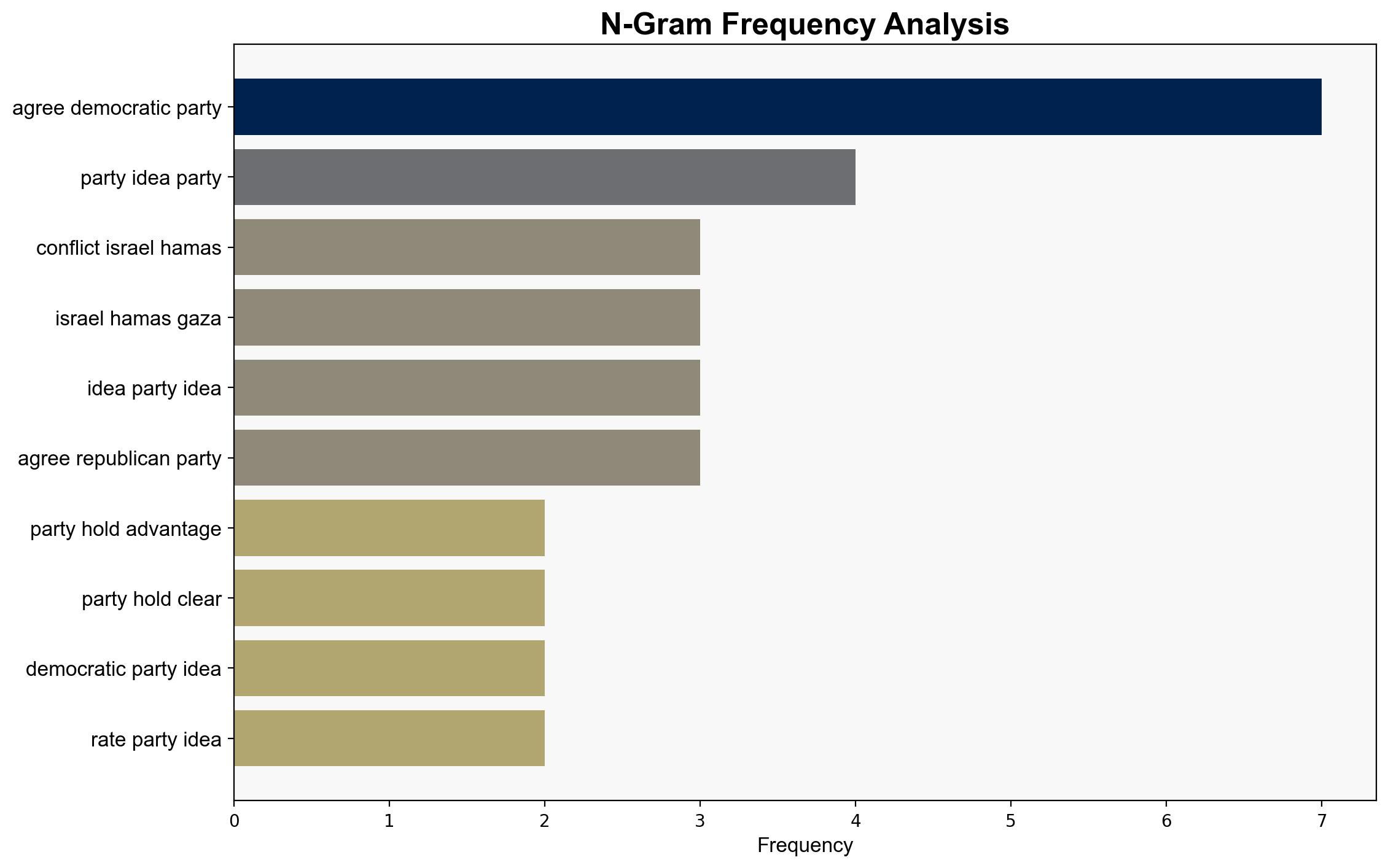2 How Americans see the parties on key issues – Pew Research Center
Published on: 2025-10-30
Intelligence Report: 2 How Americans see the parties on key issues – Pew Research Center
1. BLUF (Bottom Line Up Front)
The analysis suggests that while the Republican Party currently holds an advantage on issues like crime and immigration, the Democratic Party leads on social issues such as race, health care, and the environment. The most supported hypothesis is that partisan alignment on key issues is largely stable, but shifts in public opinion on specific topics like crime and economic policy could influence future electoral outcomes. Confidence level: Moderate. Recommended action: Monitor shifts in public opinion and policy responses to emerging issues for strategic positioning.
2. Competing Hypotheses
Hypothesis 1: The Republican Party’s advantage on crime and immigration will solidify their position in upcoming elections, as these issues gain prominence among voters.
Hypothesis 2: The Democratic Party’s lead on social issues will become more influential as demographic changes increase the importance of these topics among the electorate.
Using ACH 2.0, Hypothesis 2 is better supported due to the growing emphasis on social issues in public discourse and demographic trends favoring the Democratic Party’s platform.
3. Key Assumptions and Red Flags
Assumptions include the stability of current partisan advantages and the continued relevance of identified issues. A red flag is the potential for rapid shifts in public opinion due to unforeseen events, such as economic downturns or international conflicts. Blind spots may include underestimating the impact of emerging issues like cybersecurity or misinformation.
4. Implications and Strategic Risks
The current partisan landscape suggests a risk of increased polarization, potentially leading to legislative gridlock. Economic or geopolitical crises could shift public priorities, altering the balance of partisan advantage. The risk of misinformation campaigns influencing public opinion is also significant.
5. Recommendations and Outlook
- Monitor public opinion trends and adjust policy platforms to align with emerging voter priorities.
- Develop strategies to address misinformation and enhance public trust in political institutions.
- Scenario Projections:
- Best Case: Parties adapt to changing demographics and issues, leading to more balanced governance.
- Worst Case: Increased polarization results in policy stagnation and social unrest.
- Most Likely: Gradual shifts in public opinion lead to incremental changes in party platforms and electoral outcomes.
6. Key Individuals and Entities
No specific individuals are mentioned in the source text. The focus is on the Republican and Democratic parties as entities.
7. Thematic Tags
national security threats, cybersecurity, counter-terrorism, regional focus




